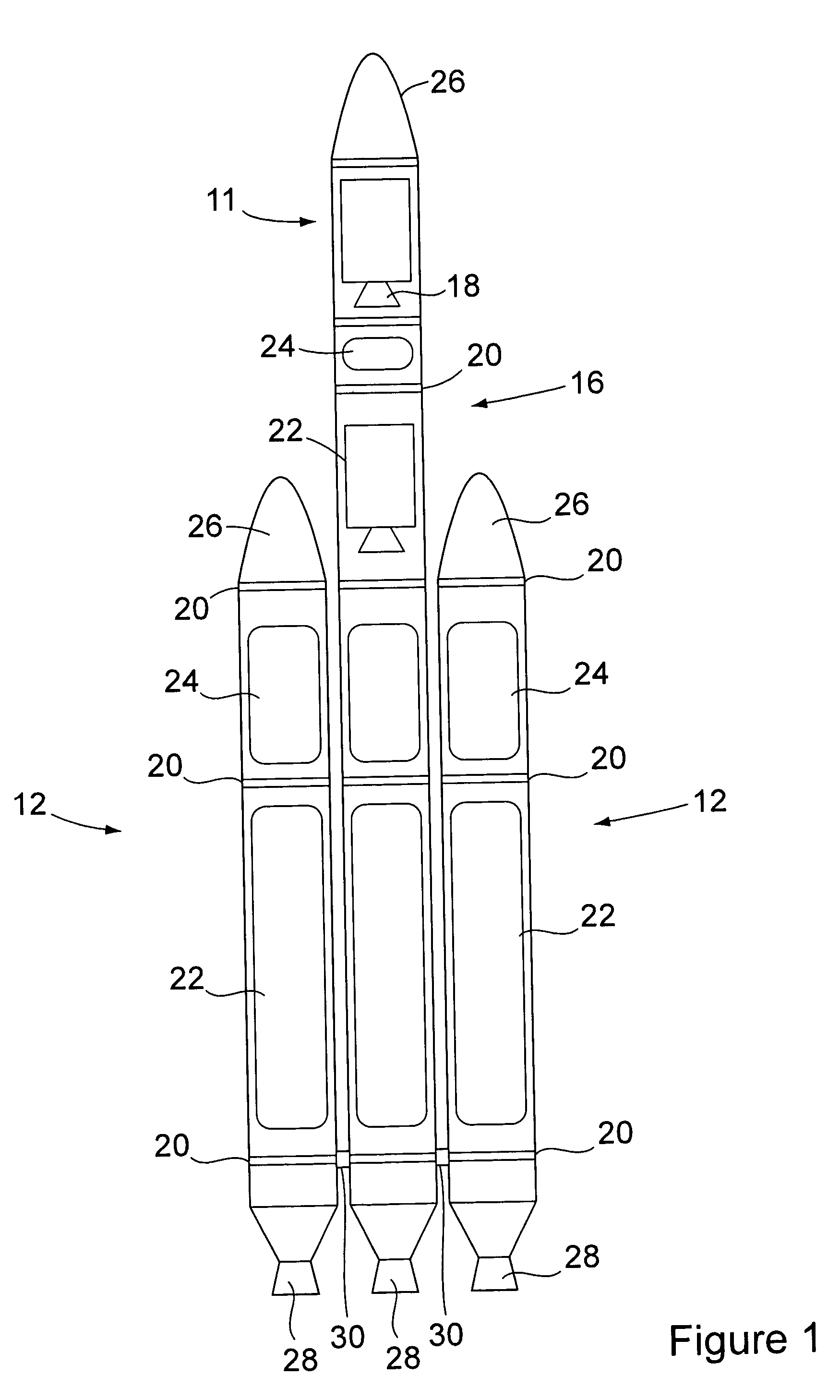Isotopic lightening
a technology of isotopic lightening and lightening layers, applied in the direction of uranium compounds, separation processes, transportation and packaging, etc., can solve the problems of less mass allocation available, difficult and costly material development, and itself a costly process, so as to reduce the density and lighten the weight
- Summary
- Abstract
- Description
- Claims
- Application Information
AI Technical Summary
Benefits of technology
Problems solved by technology
Method used
Image
Examples
Embodiment Construction
[0013]Referring to the accompanying drawings in which like reference numbers indicate like elements, FIG. 1 illustrates a launch vehicle constructed in accordance with a preferred embodiment of the present invention.
[0014]The launch vehicle 10 includes a wide variety of structures and other components that are typically designed to be as light as possible while also being designed to maximize the mechanical properties of the components. Because these components experience a variety of chemical environments, the design of the components also takes into account the chemical properties of the materials selected for the components. Such components are deemed to be “light weight” components in that they possess lower mass (i.e. weight in a gravitational field) than other components with similar performance requirements. For instance, because a strut on a launch vehicle must be lighter than a strut carrying the same load on a barge, the launch vehicle strut will typically be designed as a...
PUM
| Property | Measurement | Unit |
|---|---|---|
| density | aaaaa | aaaaa |
| density | aaaaa | aaaaa |
| natural abundance | aaaaa | aaaaa |
Abstract
Description
Claims
Application Information
 Login to View More
Login to View More - R&D
- Intellectual Property
- Life Sciences
- Materials
- Tech Scout
- Unparalleled Data Quality
- Higher Quality Content
- 60% Fewer Hallucinations
Browse by: Latest US Patents, China's latest patents, Technical Efficacy Thesaurus, Application Domain, Technology Topic, Popular Technical Reports.
© 2025 PatSnap. All rights reserved.Legal|Privacy policy|Modern Slavery Act Transparency Statement|Sitemap|About US| Contact US: help@patsnap.com


